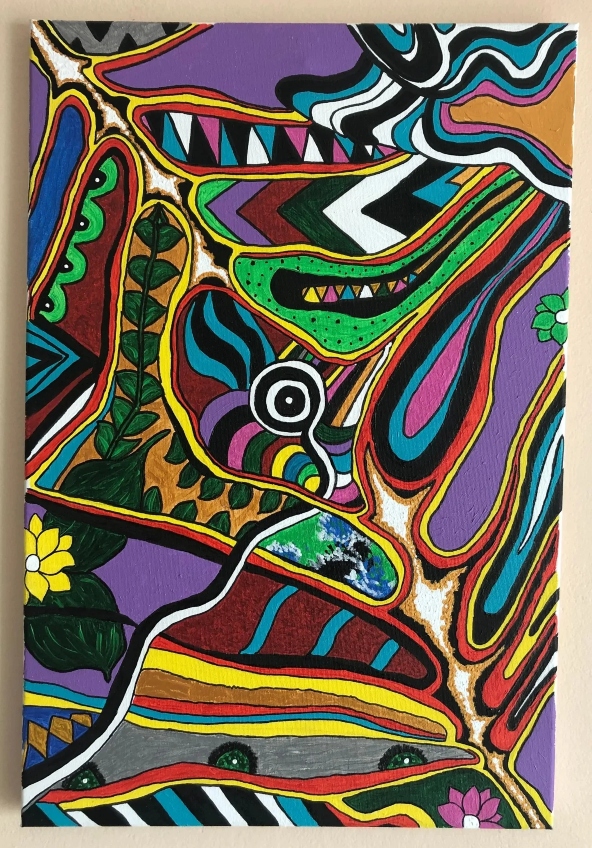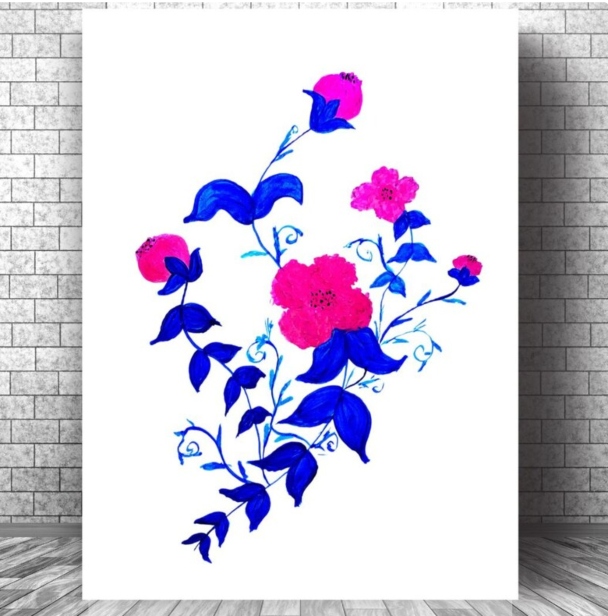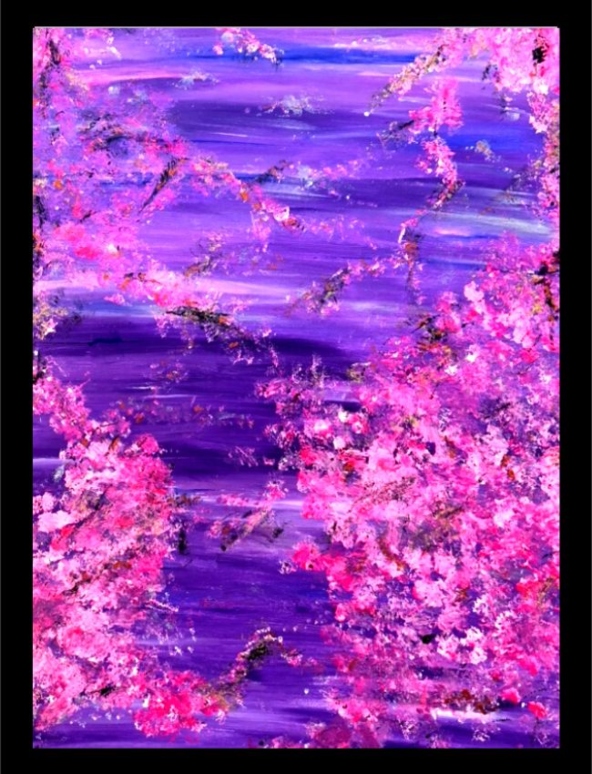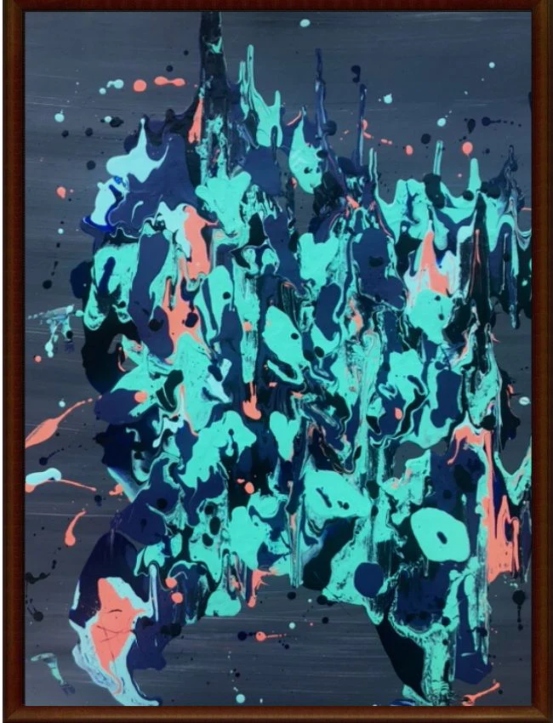25 Acrylic Painting Techniques Every Beginner Should Try
Are you looking for some acrylic painting techniques that will push your artwork to the next level? You’ve come to the right place.
Acrylic painting is one of the most popular mediums for beginner artists. Many first-time painters prefer to create art with a wet brush on a dry canvas – there is nothing wrong with that.
However, you shouldn’t limit your artistic abilities to one basic style when there are many unusual acrylic painting techniques to explore.
In this article, I’ll share plenty of techniques you can use when you create acrylic paintings.
Let’s get started, shall we?
Acrylic Painting Techniques For Beginners
1) Abstract Acrylic Painting Techniques On Canvas
By all means, abstract painting is an artwork form thousands of artists love to create. In my opinion, the reason behind the popularity of abstract art is the artistic freedom it provides for painters.
If you decide to create an abstract painting on canvas, you can do it without following any blueprints. After all, the abstract painting medium comes in many forms, shapes, and sizes.
Since there are no rules with painting abstracts, you can improvise with any technique that makes sense for your style as an artist.
It’s exactly what I did on this artwork of mine:

Visit my online store to see more paintings like this one.
2) Dry Brushing
As you can probably guess, dry brushing is the process of adding acrylic paint with a dry brush on a dry canvas. It’s all about working without letting water close proximity to paint.
Dry brushing is one of the easiest acrylic painting techniques for beginners since it allows artists to create uneven strokes and makes it simple to add layers or shapes.
I recommend giving dry brushing a try with different brushes to see which one will work best for the painting you are working on.
3) Layering
Speaking of layers, layering is another common technique painters prefer for their acrylic artworks. There is so much you can do with layering!
For example, you can add thin layers to create a whole underpainting that will serve as a sketch of your artwork. Also, you can place a transparent layer or do strokes of texture with thicker paint.
Acrylic paint dries quickly, so layering won’t slow your creative and working process.
4) Stippling
To sum up, stippling is a technique that entails adding paint in tiny dots on your canvas. Actually, stippling will work if you prefer to add your paint in all dot sizes.
More often than not, you can stumble upon paintings that were created exclusively via stippling – many artists rely on stippling from start to finish when working.
But if you want to use stippling on certain parts of your artwork instead on the whole canvas, that’s up to you – do what feels right for the type of art you have in mind.
5) Blending
Generally speaking, blending is a painting technique most artists prefer to use on oil artworks since they take longer to dry. With that said, blending works very well on acrylic paintings as well.
Assuming some of you might be unfamiliar with blending, I suggest using a sponge to assist you through the working process. Sponge blending is perfect for newbie painters.
Blending works best if you do it from lighter to darker colors since the darkest nuances won’t affect the lighter ones.
6) Washing (Watercolor Imitation)
Washing is a simple technique that entails adding water to your acrylic paint. Every artist uses that technique at a certain point:
The acrylic paint is quite thick, and mixing it with water will change its substance.
Feel free to use acrylic paint washes as a background for your painting – they dry quickly, so working with them won’t slow down your painting process.
Have a look at one example of watercolor imitation on this art print from my Etsy Shop:

7) Impasto
These days, impasto is one of the most common acrylic painting techniques – using it allows painters to achieve many effects.
Artists rely on the impasto technique to place thick layers of paint to build enhanced texture into an artwork.
Such a technique might work better if you add other mediums to the mix, like a gel (an example).
8) Hatching
Do you remember the stippling technique I mentioned a bit earlier? Hatching is a similar technique, but you’ll work with lines instead of dots.
There are many ways to incorporate hatching into your artwork – I like to create patterns in multiple layers when using lines.
Considering hatching will help your colors look deeper, you can use it for shades and backgrounds.
9) Drip Marks
Generally speaking, drip marks should be your best friend if you create predominantly abstract artwork. Here is an idea:
Take advantage of everything an acrylic paint wash allows you to do to place drip marks on your next painting.
If you prefer using fluid acrylic paint, that will work for drip marks too.
10) Flicking
Flicking is one of the easiest acrylic painting techniques, and that makes it perfect for beginner painters. But what is flicking?
Well, flicking is adding a thin layer of paint to your brush, placing it on the top of your painting, and splattering the paint by flicking the brush.
You can create all kinds of stunning details by using the flicking technique, especially in abstract paintings.
11) Dabbing
Do you enjoy creating art by applying different moves than brush strokes? In case you do, dabbing might be the right technique for you.
Dabbing is a simple technique where you’ll add paint to a towel or a sponge and dab the canvas surface with it.
As you can guess, dabbing is useful when creating backgrounds. However, dabbing will allow you to test different effects.
I did tons of dabbing on this one:

12) Palette Knife
Don’t call yourself a painter until you buy your first palette knife! Palette knives are incredible tools every art creator should have.
A palette knife works best for thicker paints. Many artists prefer a palette knife to spread the paint all over their painting.
With that said, a palette knife will come in handy if you go for different effects, patterns, and textures.
13) Underpainting
Underpainting is one of the advanced acrylic painting techniques, so you should try it after you gain some experience as an artist.
Add water to your paint and spread a thin layer of the mixture to the canvas surface. Doing so will result in having a mid-toned ground, so you can connect different shades of colors easily.
While underpainting works with both oil and acrylic paint, it will make your job easier if you use it mostly on acrylic artwork.
14) Detailing
It goes without saying that you’ll need a detail brush to try out the detailing technique, so make sure you have the right now (synthetic).
By all means, detailing requires a technical skill – it will take some time and patience until you master it.
Painting details entails adding thin acrylic paint to a thicker consistency.
15) Acrylic Links
To clarify, acrylic links are a type of fluid acrylic paint where the color is richer than usual.
You can work with acrylic links in any way you see fit.
More often than not, artists trust acrylic links to add transparent color layers to their paintings.
16) Fluid Acrylics

Speaking of fluid acrylics, I have to mention that working with them is a technique on its own:
Of course, fluid acrylics are for painters that want to create acrylic pour paintings.
Check the instructions on the paint bottles to mix the correct amount of acrylic and pour paint.
17) Wet Brush On Dry Canvas
Working with a wet brush on a dry canvas is how most artists create their artwork – it’s one of the most popular acrylic painting techniques.
It goes like this:
Wet your brush, apply the paint with it, and you’re good to go!
18) Flat Color Technique
There isn’t much I’ll have to explain about the flat color technique:
That technique entails using thick paint and applying more pressure while painting.
The flat color technique works best for abstract artworks.
19) Glazing
Glazing is a simple technique you can use if you like the idea of applying paint over paint.
Make sure the layers are thin – that will help you achieve deep coloring on the painting.
You’ll have to mix acrylic paint with a glazing liquid before you begin using this technique.
20) Stenciling

Stenciling is one of the best acrylic painting techniques for those who wish to create an artwork with a pattern, lettering, or sharp lines.
Here is how stenciling works:
Dab the pouncer into the paint and apply the paint to the stencil with gentle moves – the technique won’t work well if you press too hard.
21) Wet On Wet
Most painters are well aware of the wet-on-wet technique, but they might not know its official name – alla prima.
Alla prima is all about placing layers of paint on top of wet layers. Doing so will create wonders if you’re a fan of blending.
Make sure you work fast since acrylic paint dries quickly.
22) Varnishing
Your clients will appreciate your art even more if you take advantage of everything varnishing has to offer.
Varnishing will protect your painting from any damage too much sunlight can do.
Simply apply a varnishing medium on top of your finished artwork. Here, at Color Me Affluent, we should try to do that more!
23) Apply Lighter Paint To Dark Sections Of Your Painting
Quite frankly, highlighting an artwork is one of the easiest techniques you can do as a beginner painter.
Such a technique requires using lighter colors on top of darker layers of paint.
Try it to add more depth and texture to your artwork.
24) Sgraffito
I don’t recommend the sgraffito technique for artists with slim experience – sgraffito belongs to the category of advanced acrylic painting techniques.
With that said, sgraffito is scratching wet paint in order to reveal the paint you applied underneath.
In my opinion, sgraffito works best for portraits.
25) Color Mixing
Generally speaking, color mixing is not exactly a technique – it’s something any artist does at some point.
Mixing your paint colors has many advantages – you can create a different color without having to buy it on its own.
Spare a minute to read the Basic Color Theory before you begin color mixing.
Acrylic Painting Techniques For Beginners – Frequently Asked Questions
What Techniques Can You Use With Acrylic Paint?
10 Best Acrylic Painting Techniques For Artists:
- Layering
- Impasto
- Hatching
- Stippling
- Dabbing
- Underpainting
- Fluid Acrylics
- Glazing
- Dry Brushing
- Highlighting
What Is The Most Common Acrylic Painting Technique?
Without a doubt, the most common acrylic painting technique is layering.
Layering provides color depth and enhances the richness of your acrylic paint.
What Makes Acrylic Paintings Shiny?
You can make your acrylic painting shinier if you place a gloss medium on top of the finished artwork.
Final Say
Are all these acrylic painting techniques enough to get you started?
I sure hope so!
Chances are, I’ll add more techniques to this article later on.
Until then, tell me what your favorite techniques are in the comments section below.
Don’t hesitate to ask me questions if you have some!